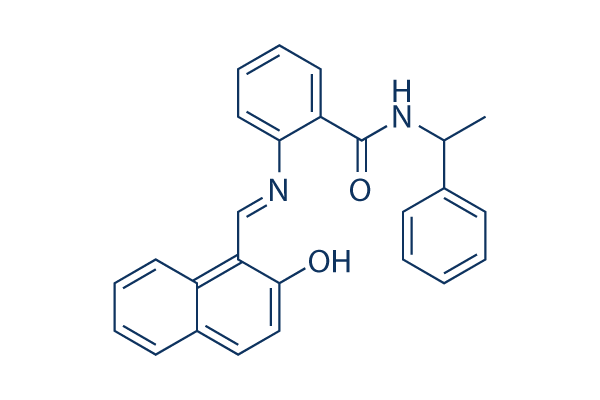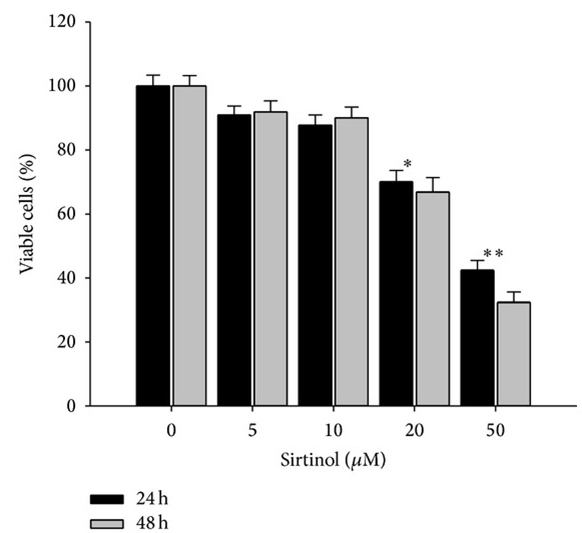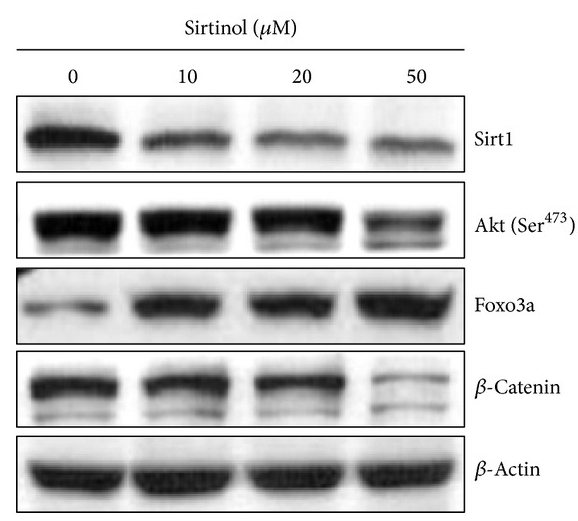
- Inhibitors
- By product type
- Natural Products
- Inducing Agents
- Peptides
- Antibiotics
- Antibody-drug Conjugates(ADC)
- PROTAC
- Hydrotropic Agents
- Dyes
- By Signaling Pathways
- PI3K/Akt/mTOR
- Epigenetics
- Methylation
- Immunology & Inflammation
- Protein Tyrosine Kinase
- Angiogenesis
- Apoptosis
- Autophagy
By research - Antibodies
- Compound Libraries
- Popular Compound Libraries
- Customize Library
- Clinical and FDA-approved Related
- Bioactive Compound Libraries
- Inhibitor Related
- Natural Product Related
- Metabolism Related
- Cell Death Related
- By Signaling Pathway
- By Disease
- Anti-infection and Antiviral Related
- Neuronal and Immunology Related
- Fragment and Covalent Related
- FDA-approved Drug Library
- FDA-approved & Passed Phase I Drug Library
- Preclinical/Clinical Compound Library
- Bioactive Compound Library-I
- Bioactive Compound Library-Ⅱ
- Kinase Inhibitor Library
- Express-Pick Library
- Natural Product Library
- Human Endogenous Metabolite Compound Library
- Alkaloid Compound LibraryNew
- Angiogenesis Related compound Library
- Anti-Aging Compound Library
- Anti-alzheimer Disease Compound Library
- Antibiotics compound Library
- Anti-cancer Compound Library
- Anti-cancer Compound Library-Ⅱ
- Anti-cancer Metabolism Compound Library
- Anti-Cardiovascular Disease Compound Library
- Anti-diabetic Compound Library
- Anti-infection Compound Library
- Antioxidant Compound Library
- Anti-parasitic Compound Library
- Antiviral Compound Library
- Apoptosis Compound Library
- Autophagy Compound Library
- Calcium Channel Blocker LibraryNew
- Cambridge Cancer Compound Library
- Carbohydrate Metabolism Compound LibraryNew
- Cell Cycle compound library
- CNS-Penetrant Compound Library
- Covalent Inhibitor Library
- Cytokine Inhibitor LibraryNew
- Cytoskeletal Signaling Pathway Compound Library
- DNA Damage/DNA Repair compound Library
- Drug-like Compound Library
- Endoplasmic Reticulum Stress Compound Library
- Epigenetics Compound Library
- Exosome Secretion Related Compound LibraryNew
- FDA-approved Anticancer Drug LibraryNew
- Ferroptosis Compound Library
- Flavonoid Compound Library
- Fragment Library
- Glutamine Metabolism Compound Library
- Glycolysis Compound Library
- GPCR Compound Library
- Gut Microbial Metabolite Library
- HIF-1 Signaling Pathway Compound Library
- Highly Selective Inhibitor Library
- Histone modification compound library
- HTS Library for Drug Discovery
- Human Hormone Related Compound LibraryNew
- Human Transcription Factor Compound LibraryNew
- Immunology/Inflammation Compound Library
- Inhibitor Library
- Ion Channel Ligand Library
- JAK/STAT compound library
- Lipid Metabolism Compound LibraryNew
- Macrocyclic Compound Library
- MAPK Inhibitor Library
- Medicine Food Homology Compound Library
- Metabolism Compound Library
- Methylation Compound Library
- Mouse Metabolite Compound LibraryNew
- Natural Organic Compound Library
- Neuronal Signaling Compound Library
- NF-κB Signaling Compound Library
- Nucleoside Analogue Library
- Obesity Compound Library
- Oxidative Stress Compound LibraryNew
- Plant Extract Library
- Phenotypic Screening Library
- PI3K/Akt Inhibitor Library
- Protease Inhibitor Library
- Protein-protein Interaction Inhibitor Library
- Pyroptosis Compound Library
- Small Molecule Immuno-Oncology Compound Library
- Mitochondria-Targeted Compound LibraryNew
- Stem Cell Differentiation Compound LibraryNew
- Stem Cell Signaling Compound Library
- Natural Phenol Compound LibraryNew
- Natural Terpenoid Compound LibraryNew
- TGF-beta/Smad compound library
- Traditional Chinese Medicine Library
- Tyrosine Kinase Inhibitor Library
- Ubiquitination Compound Library
-
Cherry Picking
You can personalize your library with chemicals from within Selleck's inventory. Build the right library for your research endeavors by choosing from compounds in all of our available libraries.
Please contact us at info@selleckchem.com to customize your library.
You could select:
- Bioreagents
- qPCR
- 2x SYBR Green qPCR Master Mix
- 2x SYBR Green qPCR Master Mix(Low ROX)
- 2x SYBR Green qPCR Master Mix(High ROX)
- Protein Assay
- Protein A/G Magnetic Beads for IP
- Anti-Flag magnetic beads
- Anti-Flag Affinity Gel
- Anti-Myc magnetic beads
- Anti-HA magnetic beads
- Poly DYKDDDDK Tag Peptide lyophilized powder
- Protease Inhibitor Cocktail
- Protease Inhibitor Cocktail (EDTA-Free, 100X in DMSO)
- Phosphatase Inhibitor Cocktail (2 Tubes, 100X)
- Cell Biology
- Cell Counting Kit-8 (CCK-8)
- Animal Experiment
- Mouse Direct PCR Kit (For Genotyping)
- Featured Products
- MRTX1133
- Nab-Paclitaxel
- KP-457
- IAG933
- RMC-6236 (Daraxonrasib)
- RMC-7977
- Zoldonrasib (RMC-9805)
- GsMTx4
- Navitoclax (ABT-263)
- TSA (Trichostatin A)
- Y-27632 Dihydrochloride
- SB431542
- SB202190
- MK-2206 Dihydrochloride
- LY294002
- Alisertib (MLN8237)
- XAV-939
- CHIR-99021 (Laduviglusib)
- Bafilomycin A1 (Baf-A1)
- Thiazovivin (TZV)
- CP-673451
- Verteporfin
- DAPT
- Galunisertib (LY2157299)
- MG132
- SBE-β-CD
- Tween 80
- Bavdegalutamide (ARV-110)
- Z-VAD-FMK
- Wnt-C59 (C59)
- IWR-1-endo
- (+)-JQ1
- 3-Deazaneplanocin A (DZNep) Hydrochloride
- RepSox (E-616452)
- Erastin
- Q-VD-Oph
- Puromycin Dihydrochloride
- Cycloheximide
- Telaglenastat (CB-839)
- A-83-01
- Ceralasertib (AZD6738)
- Liproxstatin-1
- Emricasan (IDN-6556)
- PMA (Phorbol 12-myristate 13-acetate)
- Dibutyryl cAMP (Bucladesine) sodium
- Nedisertib (M3814)
- PLX5622
- IKE (Imidazole Ketone Erastin)
- STM2457
- Saruparib (AZD5305)
- New Products
- Contact Us
research use only
Sirtinol Sirtuin inhibitor
Cat.No.S2804

Chemical Structure
Molecular Weight: 394.47
Quality Control
Cell Culture, Treatment & Working Concentration
| Cell Lines | Assay Type | Concentration | Incubation Time | Formulation | Activity Description | PMID |
|---|---|---|---|---|---|---|
| human MCF7 cells | Proliferation assay | 30 μM | 24-72 h | Antiproliferative activity against human MCF7 cells at 30 uM after 24 to 72 hrs | 24340169 | |
| human MCF7 cells | Function assay | 50 μM | 24 h | Inhibition of SIRT1 in human MCF7 cells assessed as increase in acetylation of p53 at lys 382 at 50 uM after 24 hrs by Western blot analysis | 24340169 | |
| human U937 cells | Apoptosis assay | 50 μM | 45 h | Induction of apoptosis in human U937 cells at 50 uM after 45 hrs by flow cytometry | 23189967 | |
| Hs683 | Antiproliferative assay | 72 hrs | Antiproliferative activity against human Hs683 cells after 72 hrs by MTT assay, IC50=33.9μM | 28475330 | ||
| U373 | Antiproliferative assay | 72 hrs | Antiproliferative activity against human U373 cells after 72 hrs by MTT assay, IC50=39.3μM | 28475330 | ||
| Hs683 | Cell cycle assay | 24 to 48 hrs | Cell cycle arrest in human Hs683 cells assessed as accumulation at G1 phase at IC50 after 24 to 48 hrs by propidium iodide staining-based flow cytometry | 28475330 | ||
| Hs683 | Cell cycle assay | 24 to 48 hrs | Cell cycle arrest in human Hs683 cells assessed as accumulation at G2/M phase at IC50 after 24 to 48 hrs by propidium iodide staining-based flow cytometry | 28475330 | ||
| U373 | Cell cycle assay | 24 to 48 hrs | Cell cycle arrest in human U373 cells assessed as accumulation at G2/M phase at IC50 after 24 to 48 hrs by propidium iodide staining-based flow cytometry | 28475330 | ||
| Click to View More Cell Line Experimental Data | ||||||
Chemical Information, Storage & Stability
| Molecular Weight | 394.47 | Formula | C26H22N2O2 |
Storage (From the date of receipt) | |
|---|---|---|---|---|---|
| CAS No. | 410536-97-9 | Download SDF | Storage of Stock Solutions |
|
|
| Synonyms | N/A | Smiles | CC(C1=CC=CC=C1)NC(=O)C2=CC=CC=C2N=CC3=C(C=CC4=CC=CC=C43)O | ||
Solubility
|
In vitro |
DMSO : 23 mg/mL ( (58.3 mM) Moisture-absorbing DMSO reduces solubility. Please use fresh DMSO.) Water : Insoluble Ethanol : Insoluble |
Molarity Calculator
|
In vivo |
|||||
In vivo Formulation Calculator (Clear solution)
Step 1: Enter information below (Recommended: An additional animal making an allowance for loss during the experiment)
mg/kg
g
μL
Step 2: Enter the in vivo formulation (This is only the calculator, not formulation. Please contact us first if there is no in vivo formulation at the solubility Section.)
% DMSO
%
% Tween 80
% ddH2O
%DMSO
%
Calculation results:
Working concentration: mg/ml;
Method for preparing DMSO master liquid: mg drug pre-dissolved in μL DMSO ( Master liquid concentration mg/mL, Please contact us first if the concentration exceeds the DMSO solubility of the batch of drug. )
Method for preparing in vivo formulation: Take μL DMSO master liquid, next addμL PEG300, mix and clarify, next addμL Tween 80, mix and clarify, next add μL ddH2O, mix and clarify.
Method for preparing in vivo formulation: Take μL DMSO master liquid, next add μL Corn oil, mix and clarify.
Note: 1. Please make sure the liquid is clear before adding the next solvent.
2. Be sure to add the solvent(s) in order. You must ensure that the solution obtained, in the previous addition, is a clear solution before proceeding to add the next solvent. Physical methods such
as vortex, ultrasound or hot water bath can be used to aid dissolving.
Mechanism of Action
| Features |
Sirtinol does not inhibit class I and class II HDACs.
|
|---|---|
| Targets/IC50/Ki | |
| In vitro |
Sirtinol potently inhibits recombinant yeast Sir2p activity in vitro with IC50 of 68 μM. Unlike TSA, this compound has shown no effect on human HDAC1, indicating that it is a selective sirtuin inhibitor. Unlike TSA, treatment of human primary fibroblasts with this chemical does not cause global changes in acetylation of histones and tubulin, nor does it induce a morphological change in the HeLa tumor cell line. [1] Treatment with this inhibitor at 100 μM for 24 hours causes a sustained growth arrest in MCF-7 and H1299 cells for up to 9 days after its withdrawal. This treatment induces increased SA-β-gal activity and expression of PAI-1 in both MCF-7 and H1299 cells, more potently than Splitomicin. It inhibits colony formation at concentrations of 33 μM and higher in MCF-7 and H1299 cells, more effectively compared with Splitomicin. This compound (100 μM) significantly attenuates both basal and EGF- or IGF-I-stimulated phosphorylation of ERK, JNK/SAPK and p38 MAPK in MCF-7 and H1299 cells. It blocks the basal and EGF-stimulated activation of Ras. Consistent, basal and EGF- or IGF-I-stimulated phosphorylation of Raf-1, MEK, SEK1/MKK4 and MKK7 is attenuated in cells treated with this inhibitor. [3] Inhibition of Sirt1 by this chemical enhances UV- and H2O2-induced p53 acetylation to enhance cell death in cultured skin keratinocytes. [6] Blocking of Sirt1 by this treatment results in a significant inhibition in the growth and viability of human PCa cells while having no effect on normal prostate epithelial cells. [7]
|
| Kinase Assay |
Inhibition in vitro of human Sirt2 activity
|
|
1.5 μg of recombinant human GST-Sirt2 (amino acids 18-340) are incubated at 30°C for 2 hours in 50 μL of assay buffer (50 mM Tris-HCl, pH 8.8, 4 mM MgCl2, 0.2 mM dithiothreitol with different concentrations of Sirtinol, 50 μM NAD, and tritiated acetylated HeLa histones (1000 cpm), purified by acid extraction. HDAC activity is determined by scintillation counting of the ethyl acetate-soluble [3H]acetic acid.
|
|
| In vivo |
Administration of Sirtinol at 1 mg/kg attenuates pro-inflammatory cytokine production and protects against hepatic injury following trauma-hemorrhage in male Sprague-Dawley rats. [4]
|
References |
|
Applications
| Methods | Biomarkers | Images | PMID |
|---|---|---|---|
| Growth inhibition assay | Cell viability |

|
25184156 |
| Western blot | SIRT1 / p-AKT / Foxo3a / β-catenin Foxp3 / RORγt Ac-H3K9 / Fibrobectin / Collagen 1 / α-SMA |

|
25184156 |
Tech Support
Tel: +1-832-582-8158 Ext:3
If you have any other enquiries, please leave a message.






































